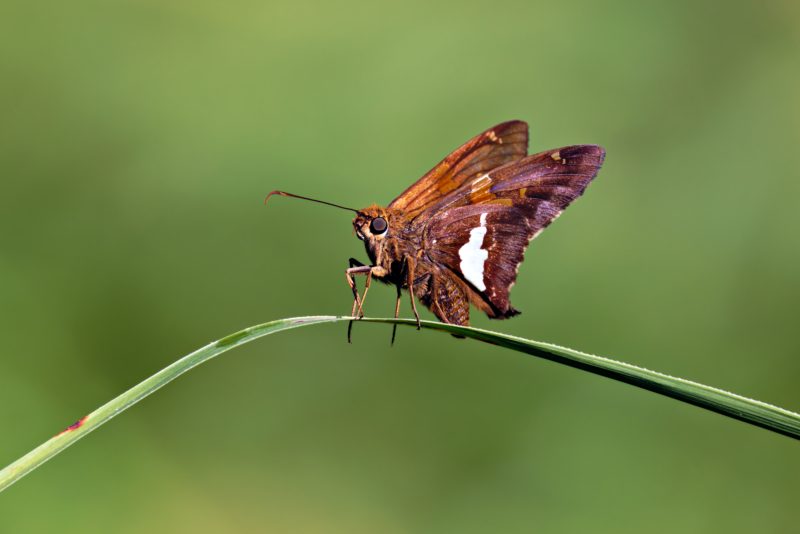On August 14, 2024, while walking along a quiet utility road in the Sequoyah National Wildlife Refuge, I noticed a butterfly unlike any I’d seen before. Its dark wings and striking markings caught my eye, prompting me to take a photo for later identification. Little did I know that this butterfly was the Silver-spotted Skipper (Epargyreus clarus), a species both common and fascinating, yet one I had never encountered up close.

Identification and Appearance
The Silver-spotted Skipper is one of the more distinctive members of the skipper family, known for its relatively large size and unique markings. With a wingspan ranging from 1 3/4 to 2 1/4 inches, it stands out among other skippers. What makes it even more noticeable are its dark brown wings, adorned with a bold silver-white spot on the underside of each hindwing and a golden stripe crossing each forewing. These markings give it a refined, almost regal appearance that’s hard to miss once you know what to look for.
One of the most intriguing aspects of this butterfly is its behavior. Unlike many other butterflies that are often seen perched atop flowers, the Silver-spotted Skipper frequently perches upside down on the undersides of leaves. This bat-like habit is particularly evident during rest periods, especially at night or on hot or cloudy days.
Habitat and Range
The Silver-spotted Skipper is a versatile species, thriving in a variety of habitats across Oklahoma and much of North America. In Oklahoma, it can be found in diverse environments, from disturbed and open woods to the more serene settings of prairie waterways, swamps, and riparian areas. Its adaptability allows it to range widely across the continental United States, even extending into southern Canada and northern Mexico.
Life Cycle and Behavior
The life cycle of the Silver-spotted Skipper is as intriguing as its appearance. The caterpillars are known for their leaf shelters, which they skillfully construct to reside in. When threatened, these caterpillars display a unique defense mechanism by regurgitating a foul-tasting substance, deterring predators.
Reproduction begins with females laying single green eggs on host plants, primarily legumes like black locust, false indigo, and American wisteria. These caterpillars feed on the host plants, growing and eventually emerging as adults ready to continue the cycle.
Feeding Habits
Adult Silver-spotted Skippers have a preference for nectar from flowers in shades of blue, red, pink, and purple. They’re known for a curious behavior called “nectar-robbing,” where they feed only on the male parts of flowers, contributing little to pollination. While this might seem like a negative trait, it’s just one more example of how this species has carved out a unique niche in its ecosystem.
Final Thoughts
My encounter with the Silver-spotted Skipper at the Sequoyah National Wildlife Refuge was a reminder of how much there is still to discover, even in familiar places. Each walk in nature can reveal something new and beautiful, waiting for us to notice. The next time you’re out exploring, keep an eye out for this remarkable butterfly—you might just find yourself as captivated as I was.
